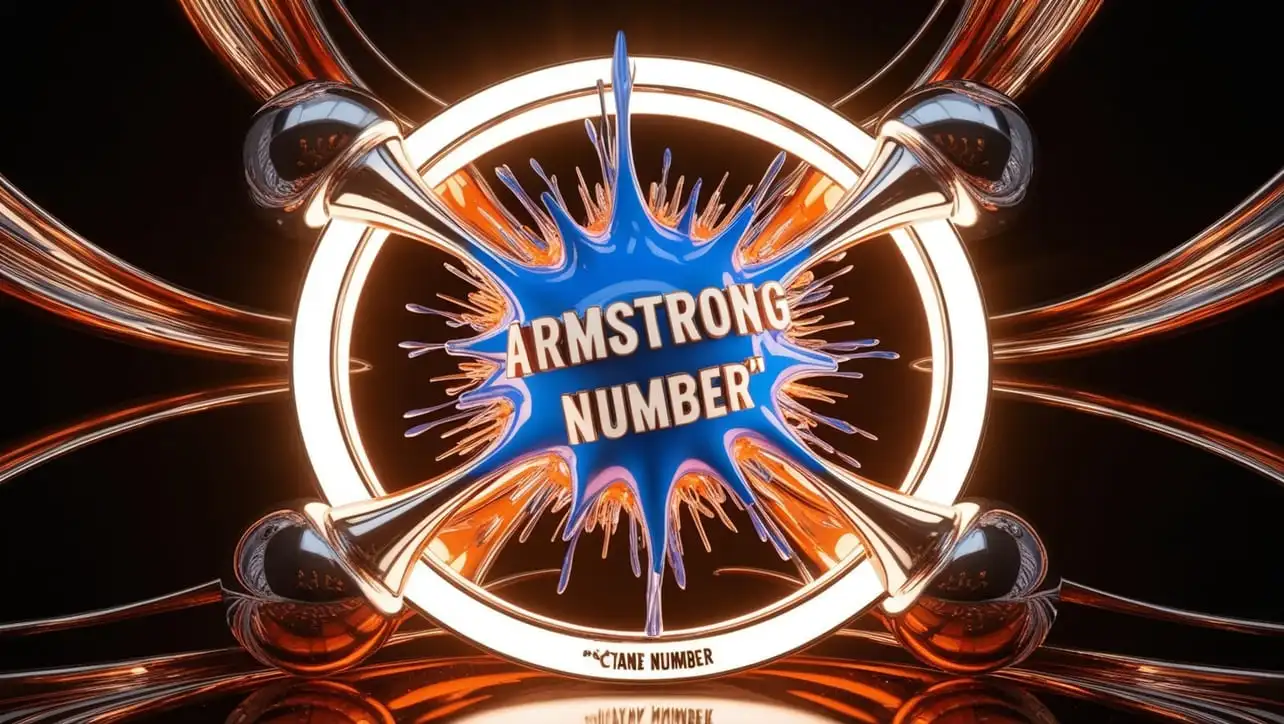
C++ Topics
- C++ Intro
- C++ String Functions
- C++ Interview Programs
- Abundant Number
- Amicable Number
- Armstrong Number
- Average of N Numbers
- Automorphic Number
- Biggest of three numbers
- Binary to Decimal
- Common Divisors
- Composite Number
- Condense a Number
- Cube Number
- Decimal to Binary
- Decimal to Octal
- Disarium Number
- Even Number
- Evil Number
- Factorial of a Number
- Fibonacci Series
- GCD
- Happy Number
- Harshad Number
- LCM
- Leap Year
- Magic Number
- Matrix Addition
- Matrix Division
- Matrix Multiplication
- Matrix Subtraction
- Matrix Transpose
- Maximum Value of an Array
- Minimum Value of an Array
- Multiplication Table
- Natural Number
- Number Combination
- Odd Number
- Palindrome Number
- Pascal’s Triangle
- Perfect Number
- Perfect Square
- Power of 2
- Power of 3
- Pronic Number
- Prime Factor
- Prime Number
- Smith Number
- Strong Number
- Sum of Array
- Sum of Digits
- Swap Two Numbers
- Triangular Number
- C++ Star Pattern
- C++ Number Pattern
- C++ Alphabet Pattern
C++ Program to Check Armstrong Number

Photo Credit to CodeToFun
🙋 Introduction
In the realm of programming, solving mathematical problems is a common task. One such interesting problem is checking whether a given number is an Armstrong number.
Armstrong numbers, also known as narcissistic numbers or pluperfect digital invariants, are numbers that are the sum of their own digits each raised to the power of the number of digits.
In this tutorial, we will explore a C++ program designed to check whether a given number is an Armstrong number. The program involves calculating the sum of the digits raised to the power of the number of digits and comparing it with the original number.
📄 Example
Let's delve into the C++ code that accomplishes this task.
#include <iostream>
#include <cmath>
class ArmstrongNumber {
public:
// Function to check if a number is an Armstrong number
static bool isArmstrong(int number) {
int originalNumber = number;
int n = 0;
int result = 0;
// Count the number of digits
while (originalNumber != 0) {
originalNumber /= 10;
n++;
}
// Reset originalNumber to the actual number
originalNumber = number;
// Calculate the sum of nth power of individual digits
while (originalNumber != 0) {
int remainder = originalNumber % 10;
result += pow(remainder, n);
originalNumber /= 10;
}
// Check if the result is equal to the original number
return result == number;
}
};
// Driver program
int main() {
// Replace this value with the number you want to check
int number = 153;
// Call the function to check if the number is Armstrong
if (ArmstrongNumber::isArmstrong(number))
std::cout << number << " is an Armstrong number." << std::endl;
else
std::cout << number << " is not an Armstrong number." << std::endl;
return 0;
}💻 Testing the Program
To test the program with different numbers, modify the value of number in the main function.
153 is an Armstrong number.
🧠 How the Program Works
- The program defines a class ArmstrongNumber containing a static method isArmstrong that takes an integer number as input and checks whether it is an Armstrong number.
- Inside the main function, replace the value of number with the desired number you want to check.
- The program calls the isArmstrong method and prints the result.
📏 Between the Given Range
Let's dive into the C++ code that checks for Armstrong numbers in the specified range.
#include <iostream>
#include <cmath>
// Function to check if a number is an Armstrong number
bool isArmstrong(int number) {
int originalNumber = number;
int numDigits = static_cast < int > (log10(number)) + 1;
int sum = 0;
while (number > 0) {
int digit = number % 10;
sum += static_cast < int > (pow(digit, numDigits));
number /= 10;
}
return (sum == originalNumber);
}
// Driver program
int main() {
std::cout << "Armstrong numbers in the range 1 to 50:\n";
for (int i = 1; i <= 50; ++i) {
if (isArmstrong(i)) {
std::cout << i << " ";
}
}
std::cout << std::endl;
return 0;
}💻 Testing the Program
Armstrong numbers in the range 1 to 50: 1, 2, 3, 4, 5, 6, 7, 8, 9,
Compile and run the program to see the Armstrong numbers in the range from 1 to 50.
🧠 How the Program Works
- The program defines a function isArmstrong that checks if a given number is an Armstrong number.
- Inside the function, it calculates the number of digits in the given number and then iterates through each digit, raising it to the power of the number of digits.
- The main function tests the range from 1 to 50, calling the isArmstrong function for each number and printing the Armstrong numbers found.
🧐 Understanding the Concept of Armstrong Number
Before delving into the code, let's understand the concept behind Armstrong numbers. An Armstrong number is a number that is the sum of its own digits each raised to the power of the number of digits.
For example, 153 is an Armstrong number because 1^3 + 5^3 + 3^3 = 153.
🎢 Optimizing the Program
While the provided program is straightforward, consider exploring and implementing alternative approaches or optimizations for checking Armstrong numbers.
Feel free to incorporate and modify this code as needed for your specific use case. Happy coding!
👨💻 Join our Community:
Author

For over eight years, I worked as a full-stack web developer. Now, I have chosen my profession as a full-time blogger at codetofun.com.
Buy me a coffee to make codetofun.com free for everyone.
Buy me a Coffee












If you have any doubts regarding this article (C++ Program to Check Armstrong Number) please comment here. I will help you immediately.